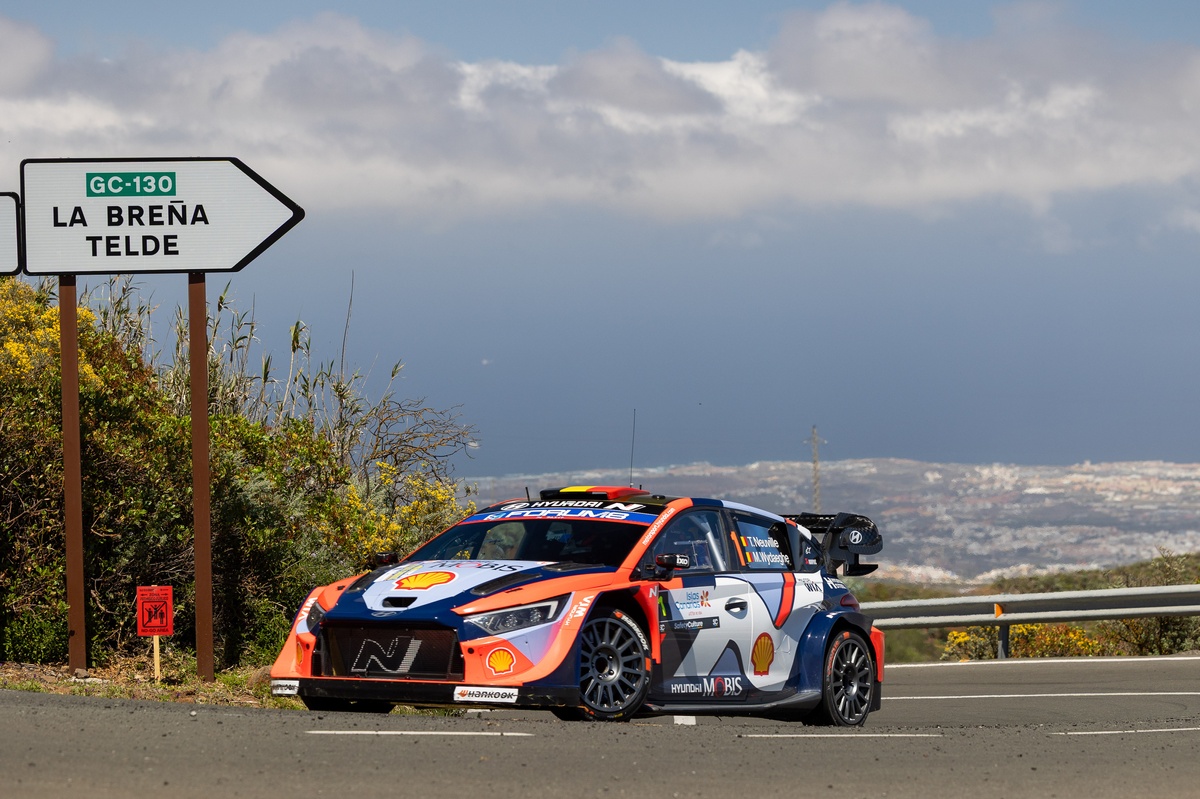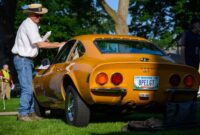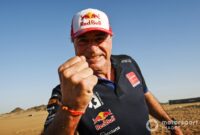Hyundai acknowledges they misjudged the challenges of Rally Islas Canarias, leaving them focused on minimizing further losses as Toyota secured the first five positions.
The Korean brand has found itself at a disadvantage after failing to decipher the code for achieving high speeds on the slick asphalt of the Canary Island roads, which are hosting their first-ever World Rally Championship event this weekend.
Thierry Neuville
,
Ott Tanak
and
Adrien Fourmaux
have been unable to challenge Toyota, driving their heavily upgraded 2025 i20 N Rally1 machines on what has proved to be a specialist rally. Fourmaux ended Saturday morning the best of the trio in sixth, 1m39.7s adrift of runaway leader Toyota’s Kalle Rovanpera, while Neuville was seventh [+1m47.5s] and Tanak eighth [+2m01.8s].
All Hyundai drivers have experienced problems with balance and grip when using the new Hankook hard tire for the first time, leading to reduced confidence in pushing their limits. Despite numerous setup adjustments made by the team, there hasn’t been much improvement, indicating a deeper underlying problem with the vehicle under such circumstances. In rallying events, WRC teams face restrictions regarding modifications; things like differentials and critical parts must remain sealed throughout the competition.
“At least we are battling alongside our teammates, which means there’s still something worth striving for; however, that’s all we can manage right now,” Neuville stated.
I’m quite certain our current differentials aren’t up to what we require. Sadly, I believe that even with the new updates on this vehicle, it might be feasible to use a distinct differential—something more open and liberated similar to Toyota’s setup. However, regrettably, these were sealed down three years back during homologation, leaving us limited options for changes.
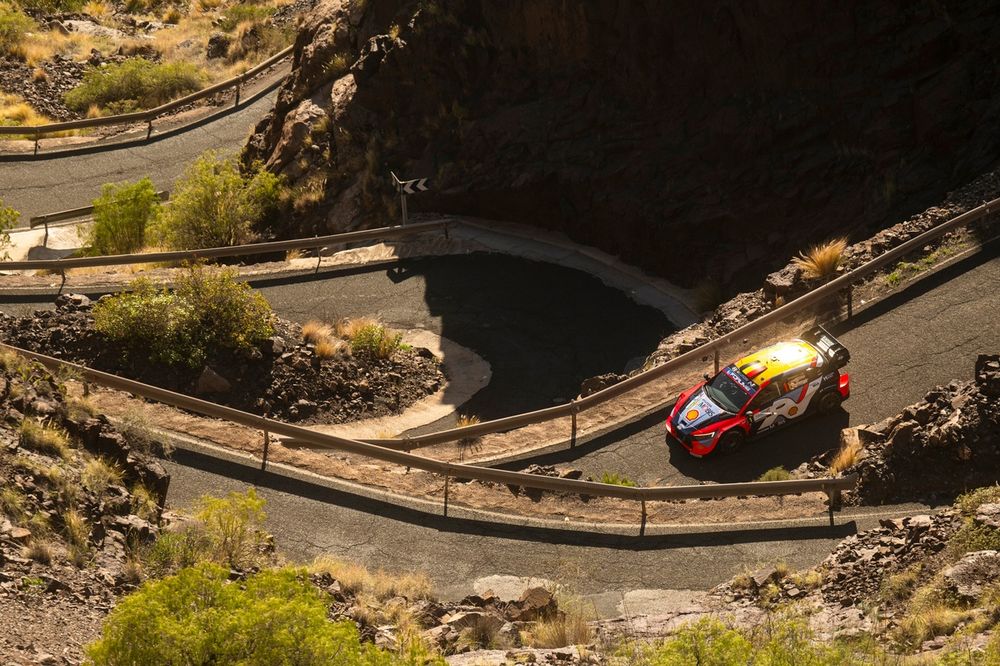
Thierry Neuville, accompanied by Martijn Wydaeghe, represents the Hyundai World Rally Team with their Hyundai i20 N Rally1.
Image courtesy of: Red Bull Content Pool
When queried about his worries regarding car performance for forthcoming asphalt competitions in Central Europe and Japan, Neuville commented: “No, the road conditions are quite specific here.”
It’s an unadulterated showcase for vehicle performance, akin to piloting a Formula 1 car. The quicker your ride, the swifter you go. Not even a pebble disrupts these pristine roadways; everything remains clear. We’ve had continuous sunshine with just slight misty spells which haven’t truly impacted us. In rallies held in places such as Central Europe and Japan, one could gain some advantage under challenging and muddy circumstances—conditions where our team often excels. Thus, I remain unfazed.
Hyundai can’t pinpoint precisely what prevents the i20 N from getting comparable performance out of the tires like Toyota does, prompting a deeper probe once they return to their main offices.
The gap to Toyota has been quite astonishing, particularly since Neuville generally outpaced the Toyotas throughout the race.
Elfyn Evans
When their duo performed a trial run during the Rally Sierra Morena in Spain earlier this month.
Reflecting on the situation, Hyundai technical director FX Demaison has refused to rule out using its final development homologation joker should it be needed to rectify the problem.
We’ve experimented with various options using our current resources, but none have resulted in significant progress,” Demaison stated. “We’ve reverted to the initial setup. The car has certain components that are locked, preventing us from extracting the best performance from these tires.
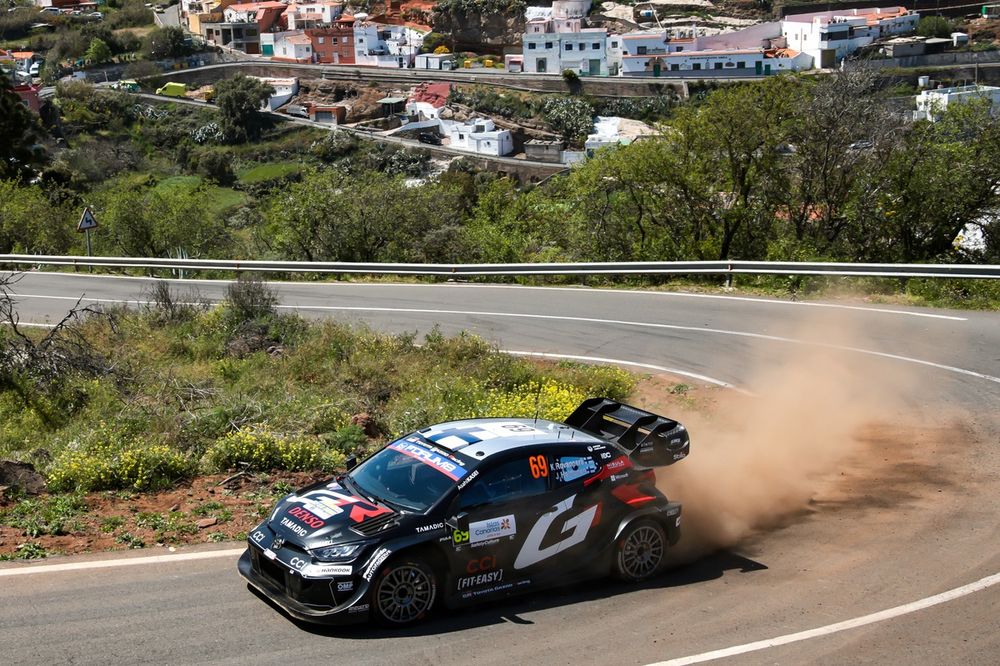
Kalle Rovanperä, Jonne Halttunen, Toyota Gazoo Racing WRT Toyota GR Yaris Rally1
Photo by: Toyota Racing
We conducted only minimal tests with this tire, and we also didn’t run any trials here, which might have been an error. We failed to anticipate just how challenging this rally would be.
“Definitely, we are now focusing on limiting the damage, so we must aim for the highest possible points. Then, we will return, improve our preparation, and become stronger.”
Absolutely, we might want to think about playing our final wildcard. Once we assess our position, and determine if using the wildcard would put us where we need to be, then we’ll go ahead with it. However, I’m uncertain about doing so right now.
Read Also:
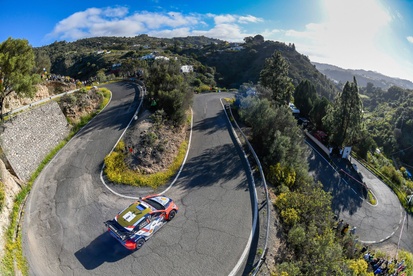
The USA could be set to join the WRC calendar in 2026.
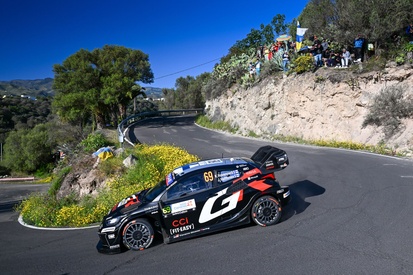
Rovanperä has discovered “strategies” to enhance pace with the new WRC tires.
In sharp contrast, Hyundai’s competitors, Toyota, have taken charge of this weekend’s rally thanks to a revitalized Rovanperä. He claimed victory in the first nine stages, placing him ahead of his teammate Sébastien Ogier by 36.9 seconds.
Championship front-runner Elfyn Evans concluded Saturday morning in third place, trailing by 53 seconds, yet still ahead of his teammates.
Sami Pajari
[+1m16.9s] and
Takamoto Katsuta
[+1m26.0s].
M-Sport-Ford’s
Gregoire Munster
came in ninth after the Hyundai group, with Yohan Rossel completing the top 10, topping the WRC2 category.

